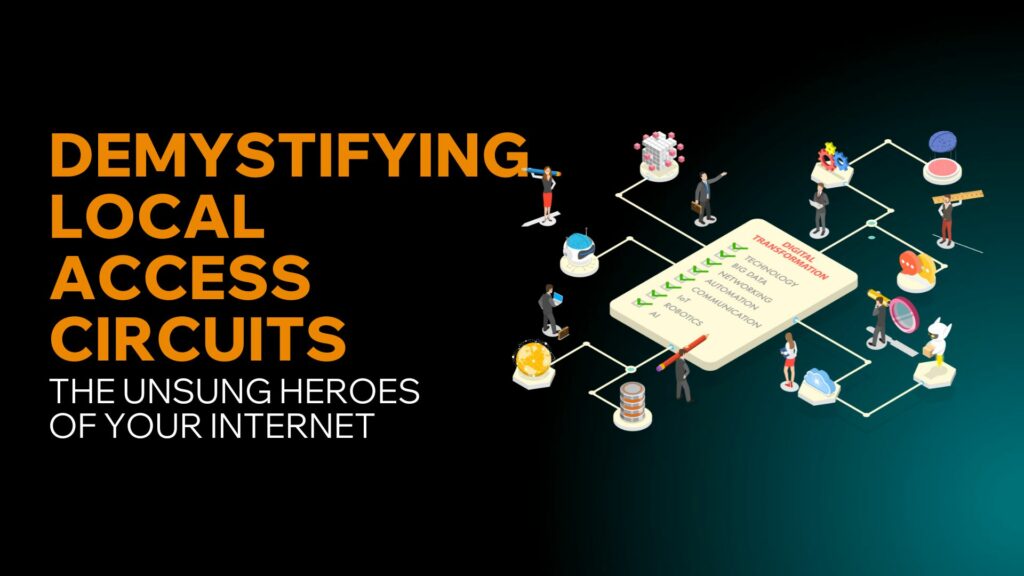
Demystifying Local Access Circuits: The Unsung Heroes of Your Internet
The internet has become an indispensable part of our lives. From binge-watching shows to working remotely, a seamless connection is crucial. But have you ever considered the hidden heroes behind this connectivity? Local access circuits, often referred to as the “last mile,” are the final link between the vast internet infrastructure and your device.
What are Local Access Circuits?
Imagine a highway delivering information. Local access circuits are the on-ramp that connects you to this highway. They bridge the gap between the broader network (data centers) and your home or office. There are several types of local access circuits, each with its own strengths:
- Copper Lines (DSL): The trusty old telephone lines can ferry internet access too. DSL is affordable and widely available, but it lags behind other options in terms of speed.
- Cable: Sharing the spotlight with cable TV, cable internet utilizes coaxial cables. It offers faster speeds than DSL, but performance can fluctuate depending on network traffic.
- Fiber Optics: Imagine data traveling at the speed of light! Fiber-optic cables transmit information using light signals, enabling superior speed and bandwidth. While expensive to install, fiber delivers the best performance for demanding tasks like streaming, gaming, and transferring large files.
- Wireless (Fixed Wireless and 5G): Cutting the cord is becoming increasingly popular. Fixed wireless uses radio signals for connectivity, while 5G, the latest mobile internet technology, promises blazing-fast speeds and minimal lag.
Why Local Access Circuits Matter?
The type of local access circuit you have significantly impacts your internet experience:
- Speed and Reliability: Fiber optics reigns supreme in this category, offering unmatched speed and stability compared to DSL or cable.
- Coverage: Availability varies based on location. Rural areas might have limited options like DSL or fixed wireless due to the cost of infrastructure development.
- Service Quality: Understanding your local access circuit empowers you to troubleshoot issues and manage expectations. For instance, DSL connections might experience slowdowns during peak hours due to shared resources.
The Future of Local Access Circuits
The landscape is constantly evolving. The rollout of 5G networks and fiber-optic infrastructure promises significant improvements in speed and reliability. Additionally, advancements in wireless technology are bringing high-speed internet to remote areas.
Choosing the Right Local Access Circuit
- Assess Your Needs: Stream 4K videos constantly? A fiber-optic connection might be ideal.
- Check Availability: Not all locations are created equal. Research what options are available in your area.
- Compare Providers: Service providers and their offerings can differ significantly. Compare plans, pricing, and customer reviews.
- Future-Proof: Consider your future needs. Opting for a faster, more reliable connection now could save you the hassle of upgrading later.
Conclusion
Local access circuits are the foundation of a smooth internet experience. By understanding the different types and their pros and cons, you can make informed decisions about your internet service. As technology continues to race forward, staying informed ensures you can leverage the full potential of the digital world.
缩小您的潜力与现实之间的差距
DCConnect’s Local Access Circuits solution delivers the bandwidth and reliability your branch offices need to operate at full potential. Experience minimal latency and congestion, eliminating delays and interruptions that hold you back. DCConnect: Your reliable on-ramp to the digital highway.



